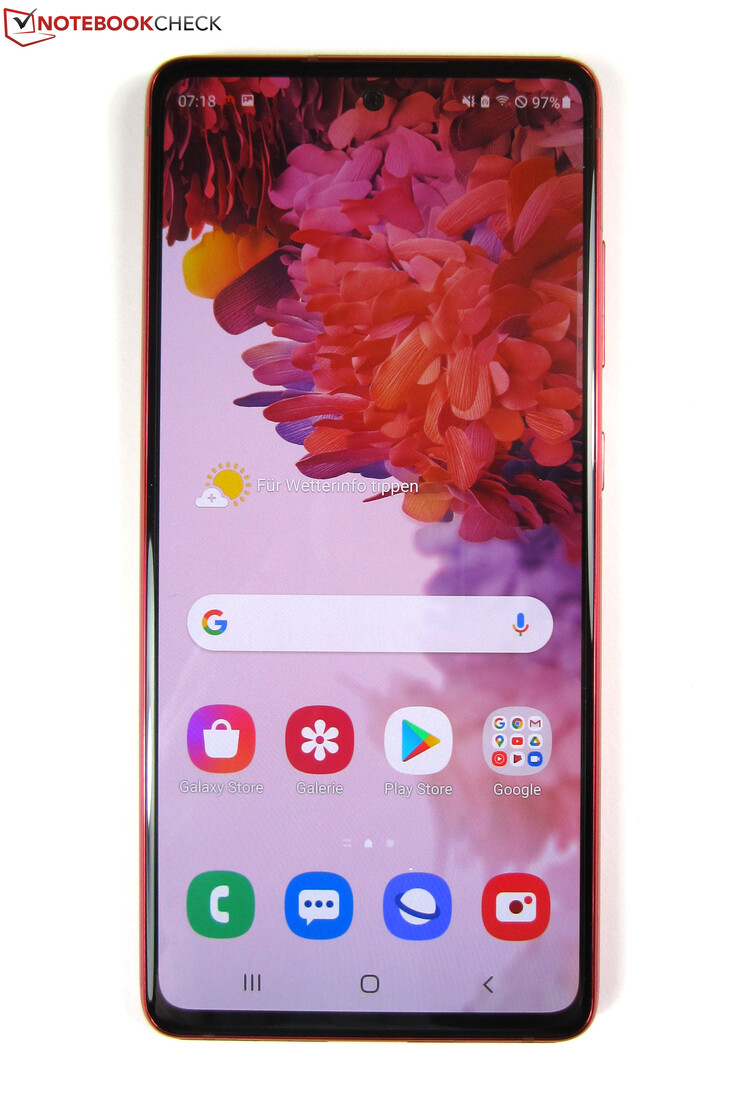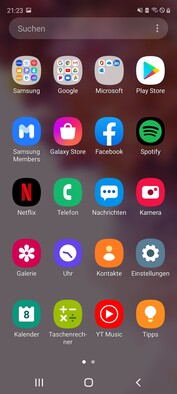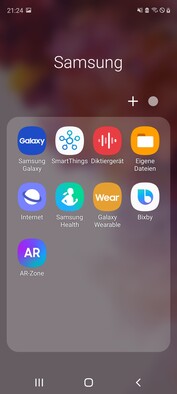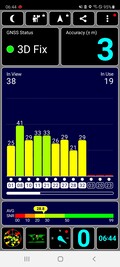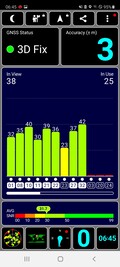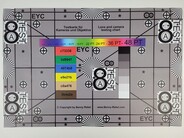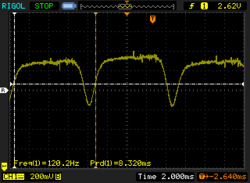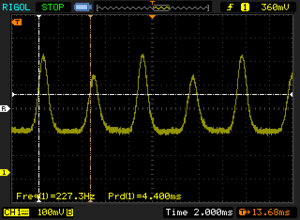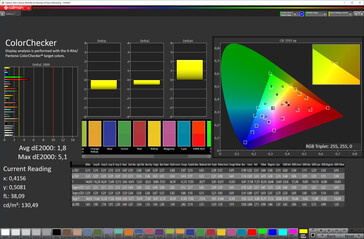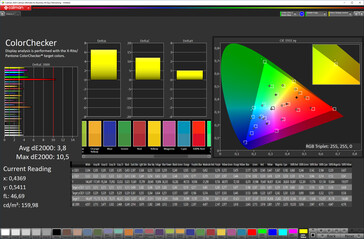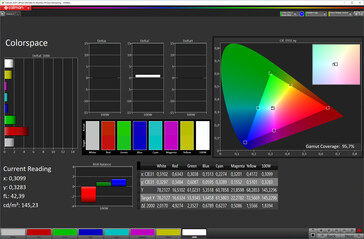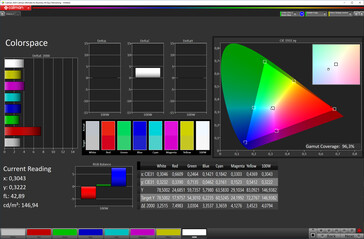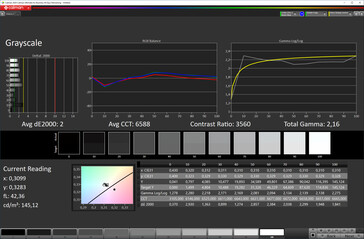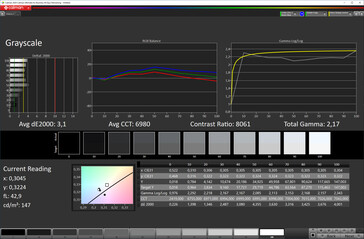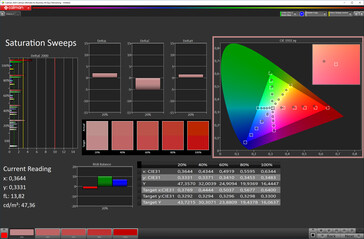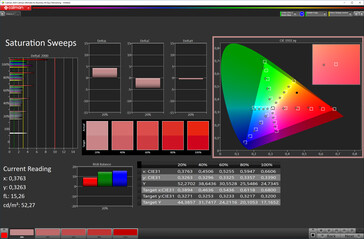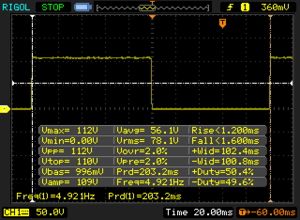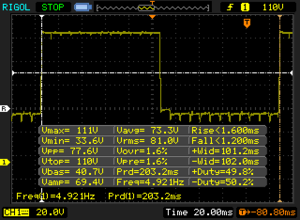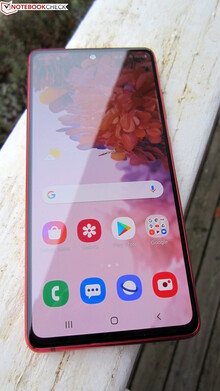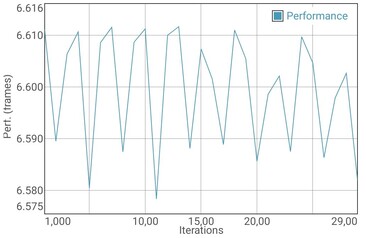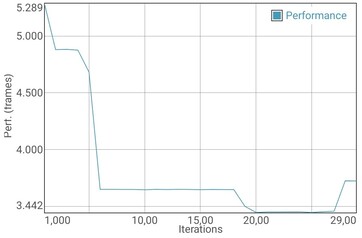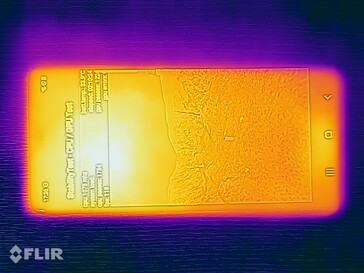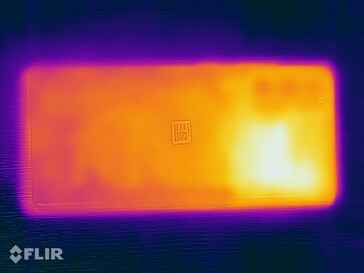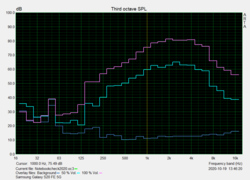Samsung Galaxy S20 FE 5G Smartphone Review: After Community feedback, the best Galaxy S20

The Galaxy-S20 models Galaxy S20, Galaxy S20+ and Galaxy S20 Ultra from Samsung are among the best smartphones on the market. With the Galaxy S20 FE 5G the manufacturer now has Galaxy S20 number four. From a buyer's view, one could say this is fortunate.
The Galaxy S20 FE 5G is actually the successor of the Galaxy S10 Lite, but has nothing to do with a slimmed down version, because as the test shows, it is even faster than the top model Galaxy S20 Ultra.
The "FE" abbreviation in the product name stands for "Fan Edition". It means Samsung has incorporated feedback from the Galaxy-S20 community into the development of the Galaxy S20 FE 5G. Therefore, for example, the case, the display size, and the SoC were optimized. Also, 730 Euro (~$865) for the fan edition is a budget price for a high end smartphone.
Comparison devices
Rating | Date | Model | Weight | Drive | Size | Resolution | Price |
|---|---|---|---|---|---|---|---|
| 87.9 % v7 (old) | 02 / 2021 | Samsung Galaxy S20 FE 5G SD 865, Adreno 650 | 190 g | 128 GB UFS 3.1 Flash | 6.50" | 2400x1080 | |
| 87.7 % v7 (old) | 03 / 2020 | Samsung Galaxy S20 Exynos 990, Mali-G77 MP11 | 163 g | 128 GB UFS 3.0 Flash | 6.20" | 3200x1440 | |
| 87.7 % v7 (old) | 04 / 2020 | Samsung Galaxy S20+ Exynos 990, Mali-G77 MP11 | 188 g | 128 GB UFS 3.0 Flash | 6.70" | 3200x1440 | |
| 88.2 % v7 (old) | 04 / 2020 | Xiaomi Mi 10 Pro SD 865, Adreno 650 | 208 g | 256 GB UFS 3.0 Flash | 6.67" | 2340x1080 | |
| 88.5 % v7 (old) | 04 / 2020 | OnePlus 8 Pro SD 865, Adreno 650 | 199 g | 256 GB UFS 3.0 Flash | 6.78" | 3168x1440 | |
| 89.4 % v7 (old) | 04 / 2020 | Huawei P40 Pro Kirin 990 5G, Mali-G76 MP16 | 209 g | 256 GB UFS 3.0 Flash | 6.58" | 2640x1200 |
Case - Galaxy S20 FE 5G in 6.5-inch form factor
With its 6.5-inch case, the Samsung Galaxy S20 FE 5G fills a gap in the Galaxy-S20 Portfolio. The Galaxy S20 is considered small for high-end phones with its 6.2-inch form factor, while the Galaxy S20+ (6.7 in) and Galaxy S20 Ultra (6.9 in) might be too large and unwieldy for some users.
Although the Galaxy S20 FE 5G has a very durable and torsion resistant aluminum frame, its back consists of plastic instead of glass as with the past Galaxy-S20 models. While this does not feel too premium there is an advantage. The polycarbonate back in a matte color tone offers much more resistance to the fingers than the glass surfaces of the Galaxy-S20 colleagues. The Galaxy S20 FE 5G therefore lies more securely in the hand and is also less prone to fingerprints.
The display of the Galaxy S20 FE 5G protected by Gorilla glass 3 is not rounded off at the corners and edges, but flat. Compared to the curved displays of the other Galaxy-S20 smartphones, however, this can prove to be an advantage, because the incident light is always reflected at the same angle and color shifts at the edges are thus excluded. The fingerprint sensor is located under the display, but uses an optical recognition method instead of ultrasound.
The Galaxy S20 FE 5G is certified to IP68 and therefore water and dust protected. Samsung offers the smartphone in 6 color variants: "Cloud White" and "Cloud Navy" (dark blue) are rather discreet, while "Cloud Lavender", "Cloud Mint", "Cloud Orange" and the "Cloud Red" of our test device are quite eye-catching.
Features - Hybrid Dual-SIM and 128 GB memory
The Galaxy S20 FE 5G has a 128 GB internal memory, which can be expanded by up to 1 TB via microSD card. Besides media data, it is also possible to store app data on it. Because the memory card occupies the second microSD slot, only one SIM card fits into the smartphone.
While the Galaxy S20 FE 5G always has 6 GB RAM, 128 GB internal memory and the Snapdragon 865, the LTE version equipped with the Exynos 990 is available in two versions: The 128 GB version also comes with 6 GB RAM, while the 256 GB version comes with 8 GB RAM.
The USB-C port of the Galaxy S20 FE 5G runs at USB 3.2 speed, supports USB OTG and thus also allows the connection of peripherals and storage devices. At the same time, it supports image output via HDMI and DisplayPort adapters.
Software - Android 10; OneUI 2.5 for the fan edition
Samsung equips the Galaxy S20 FE 5G with Android 10 and its user interface OneUI 2.5. At the time of testing (mid-November), the Android security patches were as of October 1, 2020 and thus quite up-to-date.
In addition to the Google apps and a small collection of own apps such as Samsung Health, Galaxy Wearable, Bixby or AR Zone, there are also a handful of apps from third-party providers, including Microsoft Office and OneDrive, Facebook, Spotify and Netflix. However, apart from Netflix and OneDrive, they can all be uninstalled.
Communication and GPS - fast WLAN, precise positioning
Over short distances the Galaxy S20 FE 5G communicates over Bluetooth 5.0 and NFC. Connection to local networks is over WiFi 6 (WLAN 802.11ax) and, according to Samsung, uploads and downloads are up to 1.2 GBit/s. With our reference router, the Netgear Nighthawk AX12, it provides up to 798 MBit/s with stable data throughput. The low transmission and reception power, which is only low at the very beginning, is due to the router's wake-up and is therefore negligible.
For the mobile data access the Galaxy S20 FE 5G supports all modern standards and combines this with a very broad frequency coverage. Using LTE the smartphone reaches up to 1.6 GBit/s for downloads (LTE Cat. 19). Samsung puts the maximum LTE upload speed at 211 Mbit/s (LTE Cat. 18).
To determine its current position, the Samsung smartphone uses the satellite networks GPS, Galileo, GLONASS and BeiDou. Both inside buildings and outdoors, it can locate us quickly and with an accuracy of up to 3 meters (~10 ft).
On an approximately 12-kilometer (~7.5 mi) bicycle tour, the latest Galaxy-S20 model will have to prove whether it is just as good at locating us when we are on the move. Result: Apps provide the smartphone with fairly accurate position data, because it works almost as accurately as the professional navigation device Garmin Edge 500, which follows the route for comparison.
Phone features and voice quality - VoLTE and VoWiFi, but no eSIM
The Galaxy S20 FE 5G produces good voice quality. With telephone calls there are no communication problems. Both parties hear each other clearly. Also, the communication over loudspeaker and handsfree microphone works very well. VoLTE and VoWiFi are on board. The eSIM function specified in the technical data was nowhere to be found, but it is possible that Samsung will supply it via update.
Cameras - very good triple camera in Galaxy S20 FE 5G
The Galaxy S20 FE 5G does not go all out with the camera equipment as found in the spectacular 108 MP lens of a Galaxy S20 Ultra. Instead, the Galaxy S20 FE 5G is more oriented towards the Galaxy S20, because it also uses a main camera with three lenses based on the Sony IMX555 sensor.
The triple camera consists of a 12 MP wide-angle camera, a 12 MP resolution ultra-wide-angle camera and an 8 MP telephoto camera. The wide-angle and telephoto cameras each have an optical image stabilizer, which is particularly beneficial for the telephoto camera, as it also has a 3x optical zoom. If you want to get even closer to objects, the magnification seamlessly changes to a 30x digital zoom, which can be adjusted in 0.1 steps like the optical zoom.
The front-facing camera is 32 MP and takes up, like the main camera, videos in maximally 4K with 60 FPS. The Galaxy S20 FE 5G cannot record 8K videos.
Although the technical data of the triple camera is not impressive, the Galaxy S20 FE 5G succeeds with qualitatively very good photographs.
Photos taken with the wide-angle and ultra-wide-angle camera are convincing in good lighting conditions with lots of dynamics, realistic colors and high image sharpness. You won't notice that the telephoto camera only has a resolution of 8 MP. Only at high zoom factors does it fall a little behind the strong Galaxy-S20 competition. The lenses can also handle weak light well - all in all a great performance.
Image comparison
Choose a scene and navigate within the first image. One click changes the position on touchscreens. One click on the zoomed-in image opens the original in a new window. The first image shows the scaled photograph of the test device.
Tageslicht-Szene 1Tageslicht-Szene 2Weitwinkel5-facher ZoomLowlight-UmgebungUnder controlled lighting conditions, we subject the camera to further tests. In bright ambient light (lower color chart), the Galaxy S20 FE 5G comes pretty close to the reference colors and has a special knack for grayscales. It also shows the test chart very sharply. However, weak lighting conditions (upper color chart, 1 Lux) noticeably impair the color accuracy. The camera cannot get many details out of the test chart.
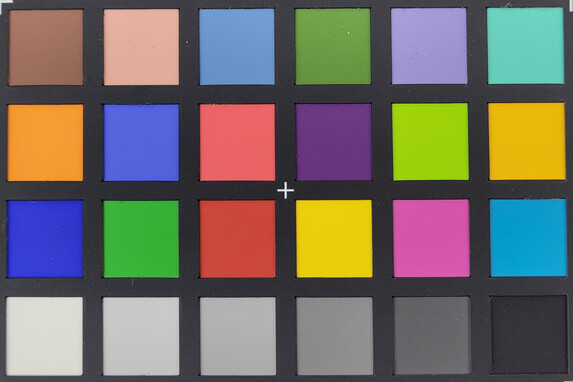

Accessories and warranty - 25-watt power supply only available as an option
Samsung attaches a modular 15-watt power supply, a USB cable, a SIM tool, a quick start guide and warranty information to the Galaxy S20 FE 5G. The smartphone can be charged with up to 25 watts. Samsung offers a suitable power supply unit in its webshop along with other accessories.
On the Galaxy S20 FE 5G there is a 24-month warranty. As extra protection one can book Samsung Care+.
Input devices; operation - very fluid due to 120 Hz display
The 6.5-inch Super AMOLED display of the Galaxy S20 FE 5G is already protected ex works by an additional protective film, which can, however, be removed and replaced by others. One feels the transition between display glass and protective foil relatively clearly, which is not disturbing but is not a high-quality feel.
With the processing of inputs, the Galaxy S20 FE 5G exposes no weaknesses. The 10-point touch screen works very precisely and the 120 Hz display makes operation very smooth. This also applies to the fingerprint sensor, which sits underneath the display, and the face recognition, which still works quite well even in weak ambient light.
Display - bright Super-AMOLED panel with crisp colors
Samsung provides the Galaxy S20 FE 5G with a brilliant Super AMOLED display, which has a resolution of 2400x1080 pixels (FHD+) and delivers a very smooth display thanks to its 120 Hz refresh rate. In contrast to the Galaxy-S20 relation, which all use a resolution of 3200x1440 pixels, the Galaxy S20 FE 5G does not achieve such a high pixel density, which is not at all noticeable, however, because the display is also so very sharp. The other Galaxy-S20 models also achieve 120 Hz, but must reduce their resolution to FHD+.
With an average of 721.1 cd/m², the display of the Galaxy S20 FE 5G shines very brightly and is not a bit inferior to the S20 relatives. With evenly distributed bright and dark image areas (APL50) even up to 957 cd/m² are possible. If the brightness sensor is switched off, the luminance drops to a maximum of 340 cd/m². At minimum brightness setting we measure 1.4 cd/m².
For brightness control the AMOLED panel uses pulse width modulation (PWM). This works in a low frequency range from 117.9 to 227.3 Hz, which can be disturbing for sensitive people. However, PWM flickering only occurs at display brightness levels of 30% and less. Above this level, automatic DC dimming starts, which operates at a fairly constant 120 Hz.
| |||||||||||||||||||||||||
Brightness Distribution: 95 %
Center on Battery: 714 cd/m²
Contrast: ∞:1 (Black: 0 cd/m²)
ΔE ColorChecker Calman: 1.8 | ∀{0.5-29.43 Ø4.78}
ΔE Greyscale Calman: 2 | ∀{0.09-98 Ø5}
95.7% sRGB (Calman 2D)
Gamma: 2.16
CCT: 6588 K
| Samsung Galaxy S20 FE 5G Super AMOLED, 2400x1080, 6.5" | Samsung Galaxy S20 AMOLED, 3200x1440, 6.2" | Samsung Galaxy S20+ AMOLED, 3200x1440, 6.7" | Xiaomi Mi 10 Pro Super AMOLED, 2340x1080, 6.7" | OnePlus 8 Pro AMOLED, 3168x1440, 6.8" | Huawei P40 Pro OLED, 2640x1200, 6.6" | |
|---|---|---|---|---|---|---|
| Screen | -5% | -0% | 26% | 33% | 11% | |
| Brightness middle (cd/m²) | 714 | 745 4% | 740 4% | 753 5% | 796 11% | 584 -18% |
| Brightness (cd/m²) | 721 | 740 3% | 747 4% | 762 6% | 779 8% | 576 -20% |
| Brightness Distribution (%) | 95 | 97 2% | 94 -1% | 96 1% | 94 -1% | 95 0% |
| Black Level * (cd/m²) | ||||||
| Colorchecker dE 2000 * | 1.8 | 2.67 -48% | 2.6 -44% | 0.9 50% | 0.68 62% | 1.1 39% |
| Colorchecker dE 2000 max. * | 5.1 | 4.52 11% | 4.57 10% | 1.6 69% | 1.55 70% | 2.3 55% |
| Greyscale dE 2000 * | 2 | 2 -0% | 1.5 25% | 1.5 25% | 1.1 45% | 1.8 10% |
| Gamma | 2.16 102% | 2.092 105% | 2.269 97% | 2.24 98% | 2.237 98% | 2.16 102% |
| CCT | 6588 99% | 6240 104% | 6284 103% | 6415 101% | 6310 103% | 6355 102% |
* ... smaller is better
Screen Flickering / PWM (Pulse-Width Modulation)
| Screen flickering / PWM detected | 227.3 Hz | ≤ 30 % brightness setting | |
The display backlight flickers at 227.3 Hz (worst case, e.g., utilizing PWM) Flickering detected at a brightness setting of 30 % and below. There should be no flickering or PWM above this brightness setting. The frequency of 227.3 Hz is relatively low, so sensitive users will likely notice flickering and experience eyestrain at the stated brightness setting and below. In comparison: 53 % of all tested devices do not use PWM to dim the display. If PWM was detected, an average of 8111 (minimum: 5 - maximum: 343500) Hz was measured. | |||
The screen of the Galaxy S20 FE 5G convinces with its very vivid and precise color display. The default screen mode is "Vivid", which covers just over 96% of the DCI-P3 color space. The second screen mode "Natural" is limited to the smaller sRGB color space, but with delta E values of 2 and smaller, it provides even more accurate color reproduction.
Display Response Times
| ↔ Response Time Black to White | ||
|---|---|---|
| 2.8 ms ... rise ↗ and fall ↘ combined | ↗ 1.2 ms rise | |
| ↘ 1.6 ms fall | ||
| The screen shows very fast response rates in our tests and should be very well suited for fast-paced gaming. In comparison, all tested devices range from 0.1 (minimum) to 240 (maximum) ms. » 12 % of all devices are better. This means that the measured response time is better than the average of all tested devices (20.2 ms). | ||
| ↔ Response Time 50% Grey to 80% Grey | ||
| 2.8 ms ... rise ↗ and fall ↘ combined | ↗ 1.6 ms rise | |
| ↘ 1.2 ms fall | ||
| The screen shows very fast response rates in our tests and should be very well suited for fast-paced gaming. In comparison, all tested devices range from 0.165 (minimum) to 636 (maximum) ms. » 11 % of all devices are better. This means that the measured response time is better than the average of all tested devices (31.6 ms). | ||
Performance - the fastest smartphone in the Galaxy-S20 series
While every other Galaxy-S20 smartphone works with the Exynos 990, the stronger Snapdragon 865 and thus the better high-end SoC calculates in the Galaxy S20 FE 5G. With the synthetic benchmarks the Galaxy S20 FE 5G beats the internal competition in all tests.
| AnTuTu v8 - Total Score (sort by value) | |
| Samsung Galaxy S20 FE 5G | |
| Samsung Galaxy S20 | |
| Samsung Galaxy S20+ | |
| Xiaomi Mi 10 Pro | |
| OnePlus 8 Pro | |
| Huawei P40 Pro | |
| Average Qualcomm Snapdragon 865 (527301 - 631025, n=24) | |
Web surfing with the Galaxy S20 FE 5G and its 120-Hz display is very smooth with no delays or dropouts. The benchmark results don't show such a rosy picture because the Snapdragon 865 does not always perform here as well as the Exynos 990. However, the difference is not noticeable during surfing.
| Jetstream 2 - 2.0 Total Score | |
| Average of class Smartphone (23.8 - 387, n=154, last 2 years) | |
| Huawei P40 Pro (Huawei Browser 10.1) | |
| Xiaomi Mi 10 Pro (Chrome 81) | |
| Average Qualcomm Snapdragon 865 (45.2 - 77, n=20) | |
| OnePlus 8 Pro (Chrome 80) | |
| Samsung Galaxy S20 (Chrome 80) | |
| Samsung Galaxy S20+ (Chrome 80) | |
| Samsung Galaxy S20 FE 5G (Chrome 81.0.4044.138) | |
| JetStream 1.1 - Total Score | |
| Huawei P40 Pro (Huawei Browser 10.1) | |
| Xiaomi Mi 10 Pro (Chrome 81) | |
| OnePlus 8 Pro (Chrome 80) | |
| Average Qualcomm Snapdragon 865 (74.2 - 145.1, n=21) | |
| Samsung Galaxy S20 (Chrome 80) | |
| Samsung Galaxy S20+ (Chrome 80) | |
| Samsung Galaxy S20 FE 5G (Chrome 81.0.4044.138) | |
| Speedometer 2.0 - Result 2.0 | |
| Average of class Smartphone (15.2 - 643, n=128, last 2 years) | |
| Huawei P40 Pro (Huawei Browser 10.1) | |
| Xiaomi Mi 10 Pro (Chrome 81) | |
| OnePlus 8 Pro (Chome 80) | |
| Average Qualcomm Snapdragon 865 (30.6 - 74.5, n=19) | |
| Samsung Galaxy S20+ (Chome 80) | |
| Samsung Galaxy S20 (Chome 80) | |
| Samsung Galaxy S20 FE 5G (Chrome 81.0.4044.138) | |
| WebXPRT 3 - Overall | |
| Average of class Smartphone (38 - 380, n=35, last 2 years) | |
| Samsung Galaxy S20 FE 5G (Chrome 81.0.4044.138) | |
| Average Qualcomm Snapdragon 865 (97 - 127, n=23) | |
| OnePlus 8 Pro (Chrome 80) | |
| Xiaomi Mi 10 Pro (Chrome 81) | |
| Samsung Galaxy S20 (Chrome 80) | |
| Samsung Galaxy S20+ (Chrome 80) | |
| Huawei P40 Pro | |
| Octane V2 - Total Score | |
| Average of class Smartphone (2228 - 121337, n=201, last 2 years) | |
| Huawei P40 Pro (Huawei Browser 10.1) | |
| OnePlus 8 Pro (Chrome 80) | |
| Xiaomi Mi 10 Pro (Chrome 81) | |
| Average Qualcomm Snapdragon 865 (14606 - 31224, n=23) | |
| Samsung Galaxy S20 (Chrome 80) | |
| Samsung Galaxy S20+ (Chrome 80) | |
| Samsung Galaxy S20 FE 5G (Chrome 81.0.4044.138) | |
| Mozilla Kraken 1.1 - Total | |
| Samsung Galaxy S20 FE 5G (Chrome 81.0.4044.138) | |
| Samsung Galaxy S20 (Chrome 80) | |
| Samsung Galaxy S20+ (Chrome 80) | |
| Average Qualcomm Snapdragon 865 (1623 - 2911, n=24) | |
| Xiaomi Mi 10 Pro (Chrome 81) | |
| OnePlus 8 Pro (Chrome 80) | |
| Huawei P40 Pro (Huawei Browser 10.1) | |
| Average of class Smartphone (257 - 28190, n=156, last 2 years) | |
* ... smaller is better
With the data throughput the Galaxy S20 FE 5G leaves nothing to complain about: Its UFS 3.1 memory is a powerhouse and ensures very short loading times. With our reference memory card, the Toshiba Exceria Pro M501, the smartphone achieves a maximum of 85.9 MByte/s and is therefore no faster on the move than the competition.
| Samsung Galaxy S20 FE 5G | Samsung Galaxy S20 | Samsung Galaxy S20+ | Samsung Galaxy S20 Ultra | Average 128 GB UFS 3.1 Flash | Average of class Smartphone | |
|---|---|---|---|---|---|---|
| AndroBench 3-5 | -8% | -6% | -6% | 6% | 75% | |
| Sequential Read 256KB (MB/s) | 1528 | 1542 1% | 1603 5% | 1632 7% | 1586 ? 4% | 2223 ? 45% |
| Sequential Write 256KB (MB/s) | 676 | 670 -1% | 694 3% | 697 3% | 763 ? 13% | 1838 ? 172% |
| Random Read 4KB (MB/s) | 228.4 | 205.3 -10% | 199.6 -13% | 202.4 -11% | 243 ? 6% | 295 ? 29% |
| Random Write 4KB (MB/s) | 218.4 | 228.1 4% | 229.8 5% | 221.4 1% | 241 ? 10% | 335 ? 53% |
| Sequential Read 256KB SDCard (MB/s) | 85.8 ? | 66.3 ? -23% | 66.8 ? -22% | 67.6 ? -21% | 85.9 ? 0% | |
| Sequential Write 256KB SDCard (MB/s) | 68.6 ? | 57.7 ? -16% | 57.6 ? -16% | 58.3 ? -15% | 68.8 ? 0% |
Games - only few games support the 120 Hz display
The Adreno 650 graphics chip integrated in the Snapdragon 865 displays current Android games as smooth as butter, even in maximum graphic detail. In our test selection of games, whose frame rates we determined with the Gamebench tool, we couldn't find a title that supports the 120 Hz display. This is possible with Armajet, but at a maximum of 60 FPS. PUBG Mobile ran in the HD setting with a maximum of 30 FPS, but played very smoothly like all other games.
Emissions - Cool in operation, but throttling under load
Temperature
Under load the Galaxy S20 FE 5G reached a maximum of 35.1 °C (95.18 °F) and remained constant, however, there is throttling. As the battery test of GFXBench shows, this happens only from the graphically intense Manhattan scenario, not an everyday workload. In this case, the performance drops after the first of 30 runs, which is reduced even further in the further course of the test. On the other hand, in the graphically simpler T-Rex scenario, the frame rates remain at the same high level until the end.
(+) The maximum temperature on the upper side is 33.2 °C / 92 F, compared to the average of 35.2 °C / 95 F, ranging from 21.9 to 247 °C for the class Smartphone.
(+) The bottom heats up to a maximum of 35.1 °C / 95 F, compared to the average of 34 °C / 93 F
(+) In idle usage, the average temperature for the upper side is 27.6 °C / 82 F, compared to the device average of 32.9 °C / 91 F.
Speakers
The stereo speakers of the Galaxy S20 FE 5G provide a decent sound, but are no more than average.
Via Bluetooth and USB-C you get a much better sound, whereby the dual audio feature can be activated additionally with the former. If two Bluetooth audio devices are paired with the smartphone, the sound can then be played over both at the same time. In addition, there is the Music Share function, which turns the Samsung into a Bluetooth hub for other Galaxy mobile devices that also support this feature.
Samsung Galaxy S20 FE 5G audio analysis
(+) | speakers can play relatively loud (90.1 dB)
Bass 100 - 315 Hz
(-) | nearly no bass - on average 20% lower than median
(±) | linearity of bass is average (9.8% delta to prev. frequency)
Mids 400 - 2000 Hz
(±) | higher mids - on average 7.3% higher than median
(+) | mids are linear (4.8% delta to prev. frequency)
Highs 2 - 16 kHz
(±) | higher highs - on average 9.5% higher than median
(+) | highs are linear (5.4% delta to prev. frequency)
Overall 100 - 16.000 Hz
(±) | linearity of overall sound is average (21.9% difference to median)
Compared to same class
» 44% of all tested devices in this class were better, 8% similar, 48% worse
» The best had a delta of 11%, average was 35%, worst was 134%
Compared to all devices tested
» 62% of all tested devices were better, 7% similar, 31% worse
» The best had a delta of 4%, average was 24%, worst was 134%
Samsung Galaxy S20 audio analysis
(+) | speakers can play relatively loud (85.9 dB)
Bass 100 - 315 Hz
(-) | nearly no bass - on average 72.8% lower than median
(+) | bass is linear (0% delta to prev. frequency)
Mids 400 - 2000 Hz
(-) | nearly no mids - on average 72.8% lower than median
(+) | mids are linear (0% delta to prev. frequency)
Highs 2 - 16 kHz
(-) | nearly no highs - on average 72.8% lower than median
(+) | highs are linear (0% delta to prev. frequency)
Overall 100 - 16.000 Hz
(-) | overall sound is not linear (120% difference to median)
Compared to same class
» 89% of all tested devices in this class were better, 9% similar, 3% worse
» The best had a delta of 11%, average was 35%, worst was 134%
Compared to all devices tested
» 97% of all tested devices were better, 3% similar, 1% worse
» The best had a delta of 4%, average was 24%, worst was 134%
Battery life - persistent Samsung smartphone
Energy consumption
The Galaxy S20 FE 5G consumes significantly less power than several other smartphones equipped with the Snapdragon 865. It supports USB Power Delivery 3.0, wireless charging and Wireless PowerShare, which enables it to charge other devices inductively.
The 4500 mAh battery is filled in just under 1:40 hours using the supplied 15-watt power supply unit. The optional 25-watt power supply is even quicker.
| Off / Standby | |
| Idle | |
| Load |
|
Key:
min: | |
| Samsung Galaxy S20 FE 5G 4500 mAh | Samsung Galaxy S20 4000 mAh | Samsung Galaxy S20+ 4500 mAh | Xiaomi Mi 10 Pro 4500 mAh | OnePlus 8 Pro 4510 mAh | Huawei P40 Pro 4200 mAh | Average Qualcomm Snapdragon 865 | Average of class Smartphone | |
|---|---|---|---|---|---|---|---|---|
| Power Consumption | -28% | -44% | 6% | -109% | 1% | -48% | -31% | |
| Idle Minimum * (Watt) | 0.75 | 0.9 -20% | 1 -33% | 0.61 19% | 2.2 -193% | 0.92 -23% | 1.133 ? -51% | 0.848 ? -13% |
| Idle Average * (Watt) | 1.41 | 1.5 -6% | 1.7 -21% | 1.19 16% | 3.3 -134% | 1.41 -0% | 2.23 ? -58% | 1.434 ? -2% |
| Idle Maximum * (Watt) | 1.44 | 2 -39% | 2.3 -60% | 1.23 15% | 3.7 -157% | 1.47 -2% | 2.45 ? -70% | 1.618 ? -12% |
| Load Average * (Watt) | 3.84 | 4.8 -25% | 5.8 -51% | 4.18 -9% | 5.9 -54% | 3.35 13% | 5.26 ? -37% | 7.01 ? -83% |
| Load Maximum * (Watt) | 7.67 | 11.5 -50% | 11.8 -54% | 8.53 -11% | 8.3 -8% | 6.37 17% | 9.68 ? -26% | 11.3 ? -47% |
* ... smaller is better
Battery life
The 4500 mAh battery gives the Galaxy S20 FE 5G long runtimes, even if you have activated the 120 Hz display like we did during the measurements. During continuous playing of the H.264 test video, the smartphone manages an impressive 20:32 hours. In simulated web surfing it is still a good 12:42 hours.
In order to get still longer run times out of the Galaxy S20 FE 5G, one can adapt the energy saving options or simply switch to a 60 Hz display. When web surfing, for example, with 60 Hz, the running time extends from 12:42 to 13:33 hours, three-quarters of an hour.
| Samsung Galaxy S20 FE 5G 4500 mAh | Samsung Galaxy S20 4000 mAh | Samsung Galaxy S20+ 4500 mAh | Xiaomi Mi 10 Pro 4500 mAh | OnePlus 8 Pro 4510 mAh | Huawei P40 Pro 4200 mAh | |
|---|---|---|---|---|---|---|
| Battery runtime | -6% | -8% | -6% | 6% | -15% | |
| Reader / Idle (h) | 33.5 | 35.1 5% | 34 1% | 35.6 6% | 35.1 5% | 24.6 -27% |
| H.264 (h) | 20.5 | 13.5 -34% | 16.3 -20% | 16.2 -21% | 17.1 -17% | 19 -7% |
| WiFi v1.3 (h) | 12.7 | 12.1 -5% | 13.2 4% | 14.4 13% | 15.4 21% | 12.4 -2% |
| Load (h) | 4.3 | 4.7 9% | 3.6 -16% | 3.3 -23% | 4.9 14% | 3.3 -23% |
Pros
Cons
Verdict: Customized Galaxy S20
With the fan edition of the Galaxy S20 Samsung lands a genuine hit. With the Galaxy S20 FE 5G buyers get a very bright super AMOLED display inclusive 120-Hz refresh rate, a very good triple camera with 3x optical zoom and a long running 4500-mAh battery. Its 6.5-inch form factor also makes it more handy than the Galaxy S20+ and the Galaxy S20 Ultra.
The fan edition carries its name rightfully: The Galaxy S20 FE 5G convinces by its very good price-performance ratio and brings along all core qualities, that characterize the remaining Galaxy-S20 smartphones.
With the Snapdragon 865, the Galaxy S20 FE 5G has still another asset, because that makes it the fastest Galaxy-S20 smartphone - since the other Galaxy S20 models use the slower Exynos 990. The fan edition wins also still another further performance comparison: the Galaxy S20 FE offers an LTE variant. This is even less at 633 Euro (~$751), but it uses the slower Exynos 990.
There are compromises only in the choice of material, because with its polycarbonate back and its somewhat thicker display edge, the FE cannot quite match haptically and optically, its Galaxy-S20 colleagues. You also have to live without a 3.5 mm headphone jack.
Samsung Galaxy S20 FE 5G
- 08/31/2022 v7 (old)
Manuel Masiero




